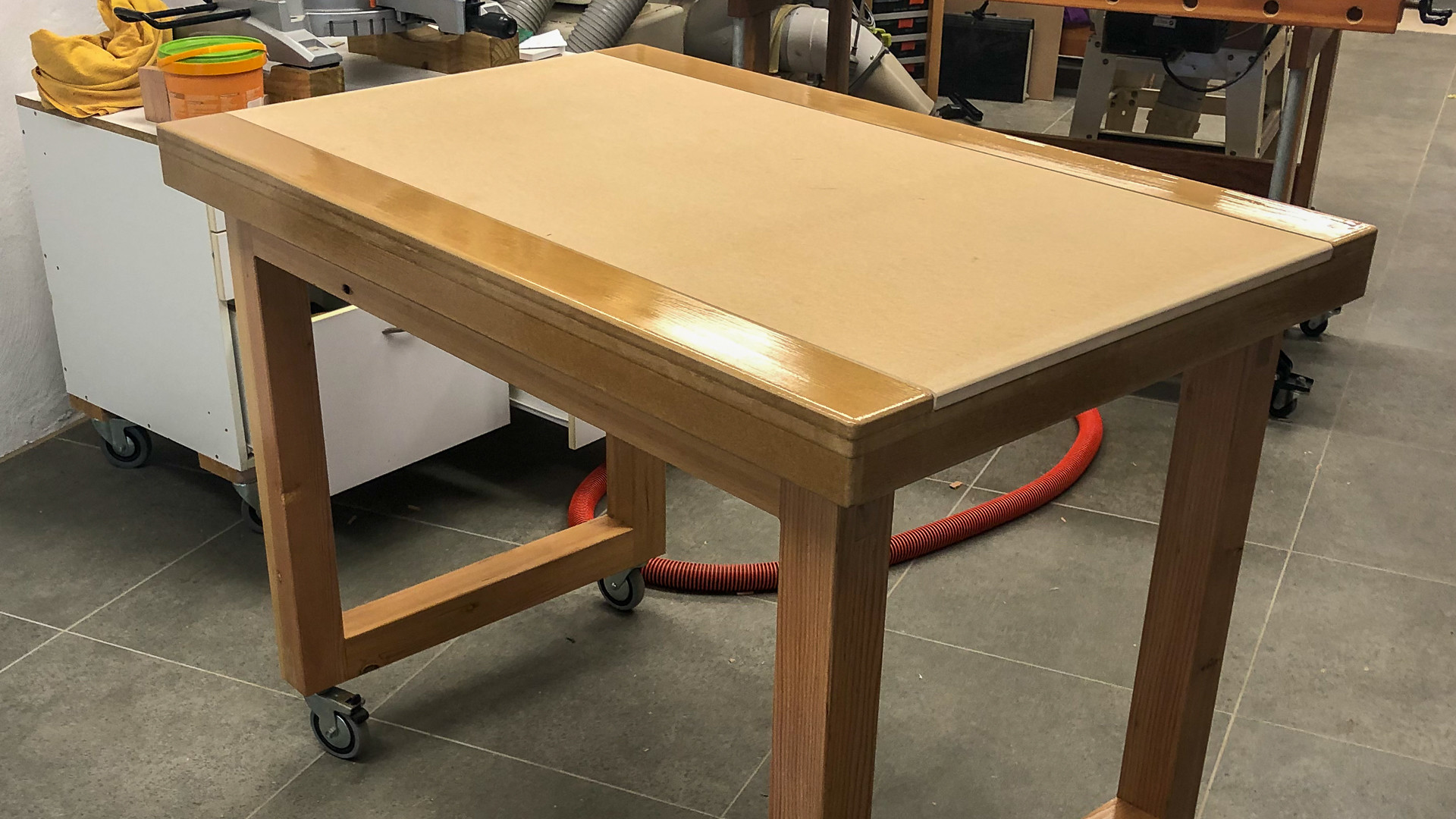The trouble with no permanent top skin is that it doesn’t stay rigid while you are “re-skinning” it so you lose the benefit of the torsion effect… I am just gluing and clamping 3mm MDF skins top and bottom, then I’ll use a screwed 16mm spoil board (with a couple of plot twists) into the subframe…
I’m using the LR2 table frame, and still have the possibility of tilting the top it as originally planned if I need to minimise the footprint a little (unlikely now that I’ve reshuffled everything in the shop).
On the LR2 the spoilboard was a “press fit” between the glued “tracks” which were also 16mm MDF. Arguably it was a complete failure as I didn’t want to risk damaging it so I used to clamp another board on top to protect the spoil board! ![]()
This one will have similar permanent “tracks” and the spoil board will be in three identical pieces, each roughly 500 x800 (screwed).
That will allow easy replacement, flipping or swapping of any panel without having to replace the whole board when just a part of it gets chopped up, and more importantly I can buy 600 x 900 or 1200 boards that are much more easily handled than a full sheet.
At what point does your table get too high to see over? ![]()
Here’s my LR2 table (build diary for the table starts here)
